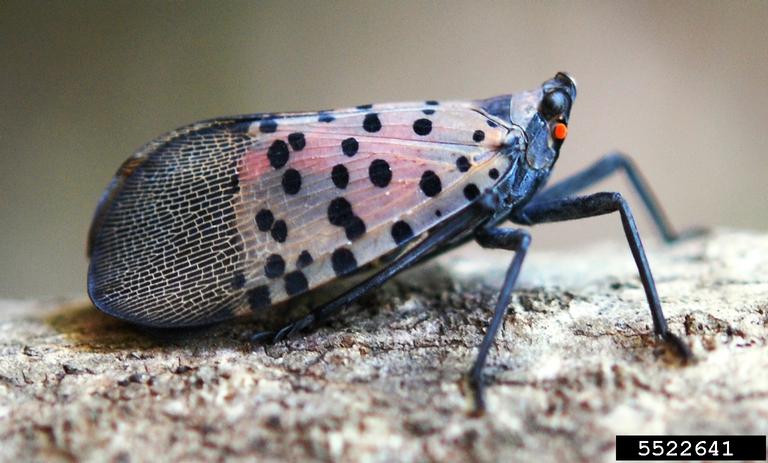By Emily Cabrera
State governments are asking people to be on the lookout for an invasive insect pest called spotted lanternfly (Lycorma delicatula). University of Georgia (UGA) experts say vigilant prevention strategies, early detection and timely interventions can help keep them from spreading into Georgia.

Native to China, India, Vietnam and parts of Eastern Asia, the spotted lanternfly is now present in 14 states throughout the Eastern U.S. The species arrived in Pennsylvania via imported goods shipped from Asia in 2014.
While they do not bite or sting humans or animals, spotted lanternflies feed on host plants including grape vines, hardwoods, and ornamental and fruiting trees, causing significant economic damage in several horticultural and agricultural industries.
Rebekah Wallace, a program coordinator at the UGA Center for Invasive Species and Ecosystem Health, oversees data coordination for the EDDMapS database. This free mobile and web app draws from state, local and private data to track invasive species throughout the U.S. Once all the data is processed, it’s conformed into one data standard in an integrated database.
Proper identification is important to help in early detection rapid response, said Wallace, adding that the site offers free resources to assist, including an image database and distribution maps.
“Anyone, from anywhere, can report an invasive or pest species via the EDDMapS app or website. Reports are then forwarded directly to the appropriate expert from a network of verified specialists,” explained Wallace. “Depending on the threat of the reported species, specialists respond immediately, sometimes the same day of an entry to the app.”
Identifying the spotted lanternfly
Female spotted lanternflies often lay eggs in wooded areas where they are feeding. Because of this, Wallace explained people can inadvertently transport the invasive bug into new territory on firewood.
“It’s important for people who enjoy the outdoors to be mindful of their potential involvement in spreading a number of invasive species. One of the best prevention methods for introducing this pest into new areas is to only use or buy firewood from local sources,” said Wallace. The “Don’t Move Firewood” initiative provides helpful resources for finding local firewood and learning how far is too far for firewood to travel.
Spotted lanternfly damage
Nymphs feed on a variety of host plants by sucking sap from young stems and leaves. Adults, which appear in late July, excrete a sticky, sugar-rich fluid similar to honeydew as they eat, which can build up on plants and on the ground underneath infested plants, causing sooty mold to form.
The honeydew also attracts other insects, such as wasps and ants, which can become an additional nuisance. Trees attacked by spotted lanternflies will show a gray or black trail of sap down the trunk. Although spotted lanternflies do not appear to kill trees, their feeding may produce oozing, wilting or dieback and may predispose trees to other stressors. The U.S. Department of Agriculture suggests inspecting trees and other host plants beginning at dusk, when insects begin migrating down from the tree canopy to gather in large groups on the trunks and stems of trees and plants.
How to report
If you find egg masses or bugs, Wallace recommends taking a photo and sending the image to either your local UGA Cooperative Extension agent or the Georgia Forestry Commission and uploading to the EDDMapS database so experts will immediately be notified.










